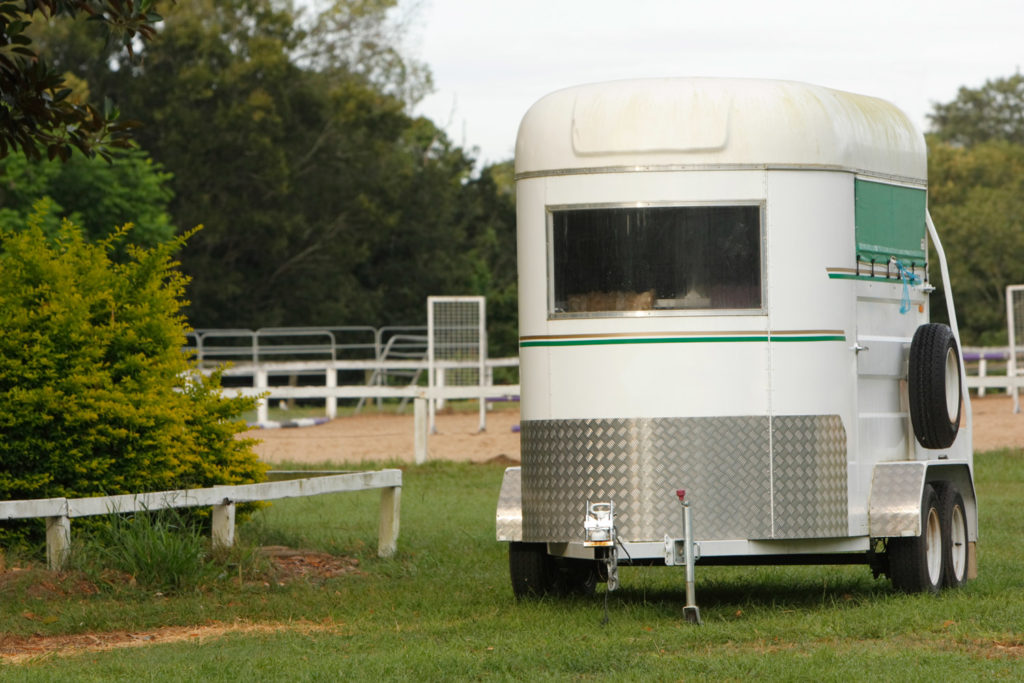
Equipment theft on a horse farm is possible anytime and anywhere. Every farm comes with copious amounts of tack as well as nice equipment to help with chores: tractors, wheelbarrows, harrows, shovels, rakes, and other implements.
A farm that is in view of roads might offer a temptation to someone to scout out the situation and move in to steal a valuable piece of equipment when nobody is home. Vegetation along the barn or tree lines on the property can conceal an intruder.
Farm equipment, such as tractors, doesn’t tend to have VIN numbers etched on the machinery, so recovery can be difficult even with police intervention. Reports stipulate that less than 20% of stolen equipment is ever recovered. Some equipment is marked with product identification or serial numbers; keep these numbers documented in writing and using photographs in a safe place.
What can you do to protect your equipment? First, lock your entry gate when you aren’t home and during the night. Second, lock your tack room and put halters away out of sight and access. Third, remove valuable equipment from casual view. Put tractors and other equipment inside the barn, close the door and lock it with a padlock. Be sure door hinges are installed on the inside and aren’t accessible from the outside.
If horses are turned out for the day, close and lock their entries into the stable, or at least padlock gates leading outside.
It is possible to lock tractor tires or even chain equipment to a solid wall or cement block. For any lock you use, use tamper-resistant, case-hardened steel shanks on the locks.
Good lighting around a barn can be a mild deterrent, but it is fraught with its own set of problems ranging from attractant for aquatic insects that pass Potomac horse fever, to mosquitoes that can spread Eastern and Western equine encephalitis and West Nile virus. Lights at night also adversely affect migrating birds.
Motion-detection security light systems are best as they only turn on briefly when something or someone passes by.
For saddles, headstalls and other easily transported equipment, one suggestion is to engrave some identifying information (like your driver’s license or phone number) on the bottom to enable police verification that it is yours if a stolen piece is recovered.
Lock up all valuable tack within a secure room, but don’t label it as Tack Room. If many people access this area, a pin-pad key access might be the most expedient means of entry, and this will ensure that the room locks behind as people exit.
A commercially available saddle vault bolts to the floor or you can install a saddle rack with a lockable clamp or a cable-style gun lock attached to a saddle rack. This stops a person from casually grabbing a saddle and walking off. Saddle covers (especially when loudly decorated to deter someone from just walking away with saddle and cover) are useful to hide expensive-looking saddles that pose a temptation. RFID microchips can be inserted into a saddle panel along with a label that identifies the saddle as chipped.
The next precautionary strategy relies on an effective barn surveillance system, as described in previous articles regarding security cameras. Couple camera surveillance with “No Trespassing” signs and motion-activated lighting, as well as signage that says, “This property is under 24-hour surveillance” or “CCTV cameras are monitoring this property at all times.”
And, finally for those of you who hire helpers and staff on your farm, have a thorough background check done on each person.
A final note is that while you want to be as careful to protect your horses, tack and equipment as possible, there is a convenience consideration at a horse barn. Some owners leave blankets and halters on each stall door for ease of storage and use. Having locks on every door can be a protectant, but it also can mean that horses might be locked inside a barn during an emergency when they need to be let out.
Weigh all these considerations when you are tightening security around your horse farm and barn to prevent equipment theft.



